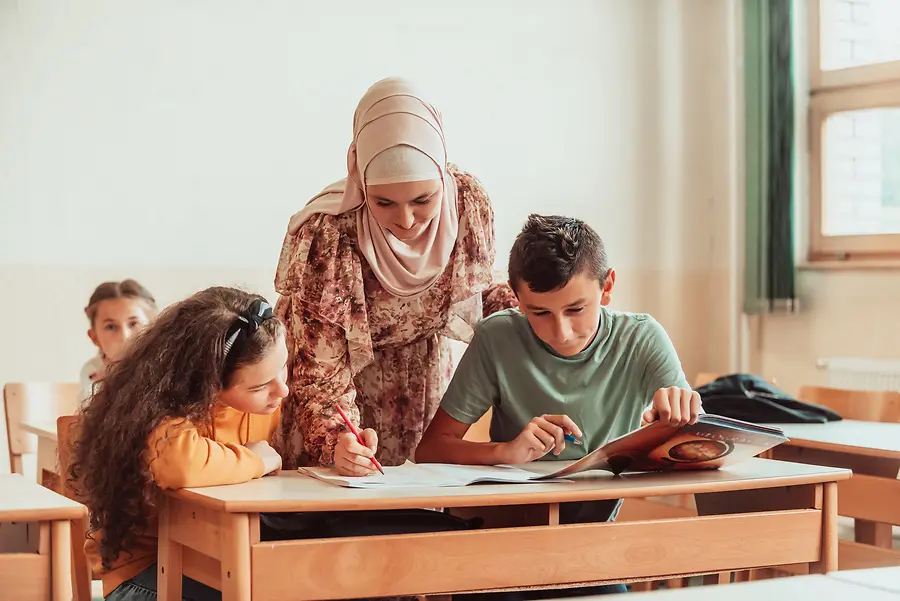Classroom Management
Creating an Effective Classroom Environment Through Clear Rules, Consequences, and Positive Incentives

To build an effective classroom, clear rules and expectations are essential. In our classroom, we operate as a team: the educator is the coach, and the students are the players. Successful teams need shared ground rules that everyone understands and follows. These rules do not need to be complex or overly detailed. As Alter states, “Classroom rules are defined as the statements that teachers present to describe acceptable and unacceptable behavior” (2017). It is the educator’s responsibility to establish these expectations, whether or not students are involved in creating them. When rules are short, simple, and clearly stated, students are more likely to understand and follow them. A well-structured classroom environment supports positive behavior, academic engagement, and respectful interactions.
Establishing Classroom Rules
The rules in this classroom were created with student participation. When students contribute to the expectations they are asked to follow, they develop a stronger sense of belonging and confidence. They are also more inclined to follow rules they helped shape. Erwin notes, “If the teacher engages the students in developing clear behavioral guidelines that the students see as adding quality to their school lives, the relationship between the students and the teacher is enhanced. What’s more, students will be much less likely to disrupt the learning environment” (2004).
As educators, we must recognize that students benefit from helping design a structured environment. Participatory rule-making gives students ownership and promotes responsibility. Aelterman writes, “Because students have internalized the reason for complying with classroom rules, they more volitionally stick to these rules and thus take more personal responsibility for their functioning” (2018).
On the second day of school, each student received a sticky note and wrote one rule they felt the classroom should follow. After reviewing the ideas and identifying patterns, the class gathered to discuss the results. Together as a community, they combined their suggestions into five core rules. Every student signed the final list to show their commitment.
Classroom Rules
- Listen when your teacher or classmate is speaking.
- Follow directions given by the teacher.
- Respect yourself, others, and our school.
- Follow transition expectations every day.
- Raise your hand to speak or stand.
- Be kind and honest with classmates and teachers.
Rule 1: Listen when your teacher or classmate is speaking.
Active listening is essential in a community of learners. Everyone—teachers and students—has valuable ideas and experiences to share. Originally, this rule referenced only the teacher, but the educator believes that everyone in the classroom deserves to be heard and respected.
Rule 2: Follow directions given by the teacher.
Following directions helps the class stay focused and productive. When students understand expectations and act on them, lessons flow more smoothly, and learning outcomes improve. Students who follow directions are better prepared to complete tasks and meet academic goals.
Rule 3: Respect yourself, others, and our school.
Respect is a foundational life skill that students carry beyond the classroom—into the workforce, friendships, families, and communities. While respect can be difficult to measure, educators observe how students communicate, collaborate, and care for shared spaces. Teaching respect benefits students academically, socially, and emotionally.
Rule 4: Follow transition procedures daily.
Transitions between lessons, spaces, or activities can be challenging. Clear, consistent routines help prevent disruptions and promote safety. When students follow established procedures, they know what is expected and avoid unnecessary confusion or conflict.
Rule 5: Raise your hand to speak or stand.
It is impossible for everyone to talk at once. Raising a hand ensures that all voices are heard respectfully. This rule helps maintain order, prevents interruptions, and creates space for thoughtful discussion.
Rule 6: Be kind and honest with classmates and teachers.
Kindness and honesty cannot be measured on a traditional rubric, but they are reflected in the way students treat one another. This expectation supports a healthy classroom community. Students who practice both values build stronger relationships and learn skills they will use for life.
Setting Consequences When Rules Are Broken
Consequences help students understand the importance of classroom expectations. Educators must ensure students are aware of the rules and what happens when they are ignored. Lindberg writes, “Students need to realize there are positive as well as negative consequences for their actions” (p. 81). Consequences should be clearly defined, consistent, and presented in a hierarchy of escalating responses.
List of Consequences
- First Offense: Verbal reminder (2 coins removed)
- Second Offense: Private discussion (5 coins removed)
- Third Offense: White slip sent home (7 coins removed)
- Fourth Offense: Parent call (9 coins removed)
- Fifth Offense: Referral to Head of Discipline
- Severe Clause: Immediate referral for dangerous behavior
Explanation of Consequences
1. First Offense: Verbal Reminder (2 coins removed)
Before issuing a verbal reminder, the teacher will:
- Make eye contact (the teacher look)
- Move near the student
- If behavior continues, the teacher will give a verbal reminder and remove two coins from the student’s wallet.
2. Second Offense: Private Discussion (5 coins removed)
Steps before escalation:
- The look
- Clear notice that the student is at a second offense
- A warning that a private meeting will occur if behavior continues
- If unresolved, the student is briefly removed from group work for a two-minute conversation about the broken rule. Five coins are removed.
3. Third Offense: White Slip (7 coins removed)
Steps before escalation:
- The look
- Verbal notice of third offense
- If behavior continues, the student receives a white slip documenting the broken expectation. It must be signed by a guardian. Seven coins are removed.
4. Fourth Offense: Parent Call (9 coins removed)
Steps:
- The look
- A private notice that a parent call will occur
- If the behavior persists, the teacher contacts the parent during a break. Nine coins are removed.
5. Fifth Offense: Referral to Head of Discipline
Steps:
- The look
- Private notice that referral is next
- If unresolved, the student is formally referred. A conversation with the guardian follows.
Severe Clause
The severe clause applies to dangerous behaviors such as physical aggression or extremely inappropriate language. The educator immediately alerts the front office and the student is escorted out of class. The teacher later documents the incident and collaborates with administration to determine next steps.
Incentives
The classroom uses one individual incentive system and two whole-class incentives. Positive reinforcement strengthens success and reduces disciplinary issues. Students earn coin tokens for respectful behavior, academic growth, adherence to rules, and completion of daily tasks. At the end of each month, students may visit the class store to purchase pencils, erasers, or small prizes.
Whole-class incentives promote teamwork:
- 100 coins: choice of extended recess or classroom free time
- 300 coins: ice cream or pizza party
These rewards motivate the class to collaborate as a community of lifelong learners. As Lindberg writes, “With a good coach—that’s you—your team can be a winner” (p. 71).
Motivating Difficult Students
No classroom is perfect, and students have personal histories, challenges, and emotional needs. Some students will test limits, and sometimes educators spend too much time trying to understand why instead of focusing on solutions. It may not always be possible to identify the root cause— even after conversations with guardians—and valuable time is lost.
Instead, educators should design individualized behavior plans with meaningful rewards. For example, if a student struggles with transitions, teacher and student can create a checklist. When the student completes it four times, they receive 15 minutes of independent reading, which aligns with their interests.
In another case, a student who frequently used disrespectful language showed no improvement with classroom incentives. After speaking with the parents, the teacher developed a home-based reward: if the student went three days without disrespectful behavior, they earned one hour of extra playtime at home. Lindberg reminds us, “Effective teachers are proactive rather than reactive” (p. 85). Educators must observe, adapt, and support each student's path to success.
When and How to Involve Parents, Counselors, Teachers, and Administrators
From the beginning of the school year, educators should involve parents and school personnel in the discipline process. During Open House, teachers should clearly communicate expectations, incentives, and consequences. Meetings with counselors, administrators, and colleagues help ensure consistency and support. When everyone understands the classroom system, students feel safe, valued, and part of a community of learners.


